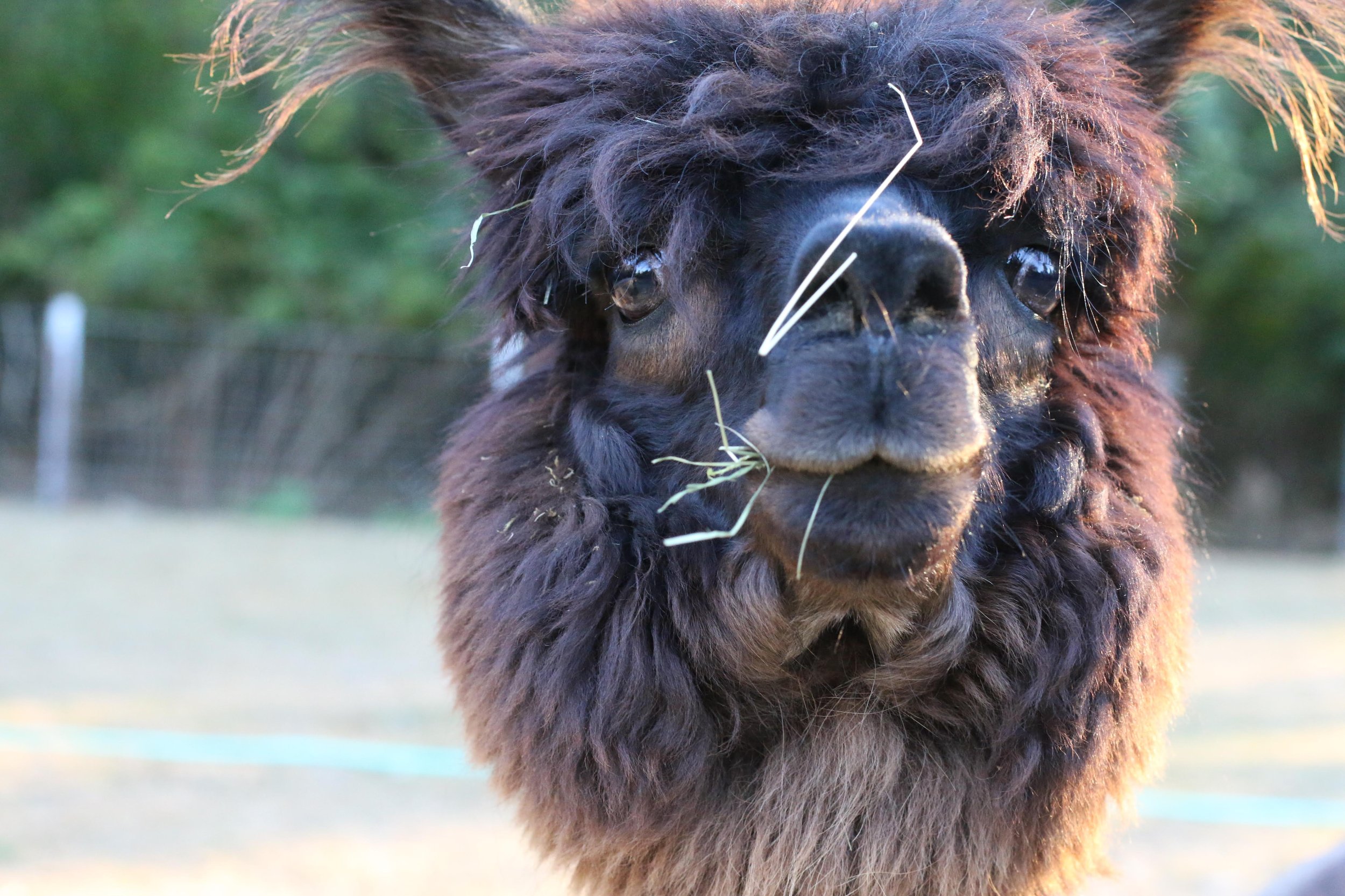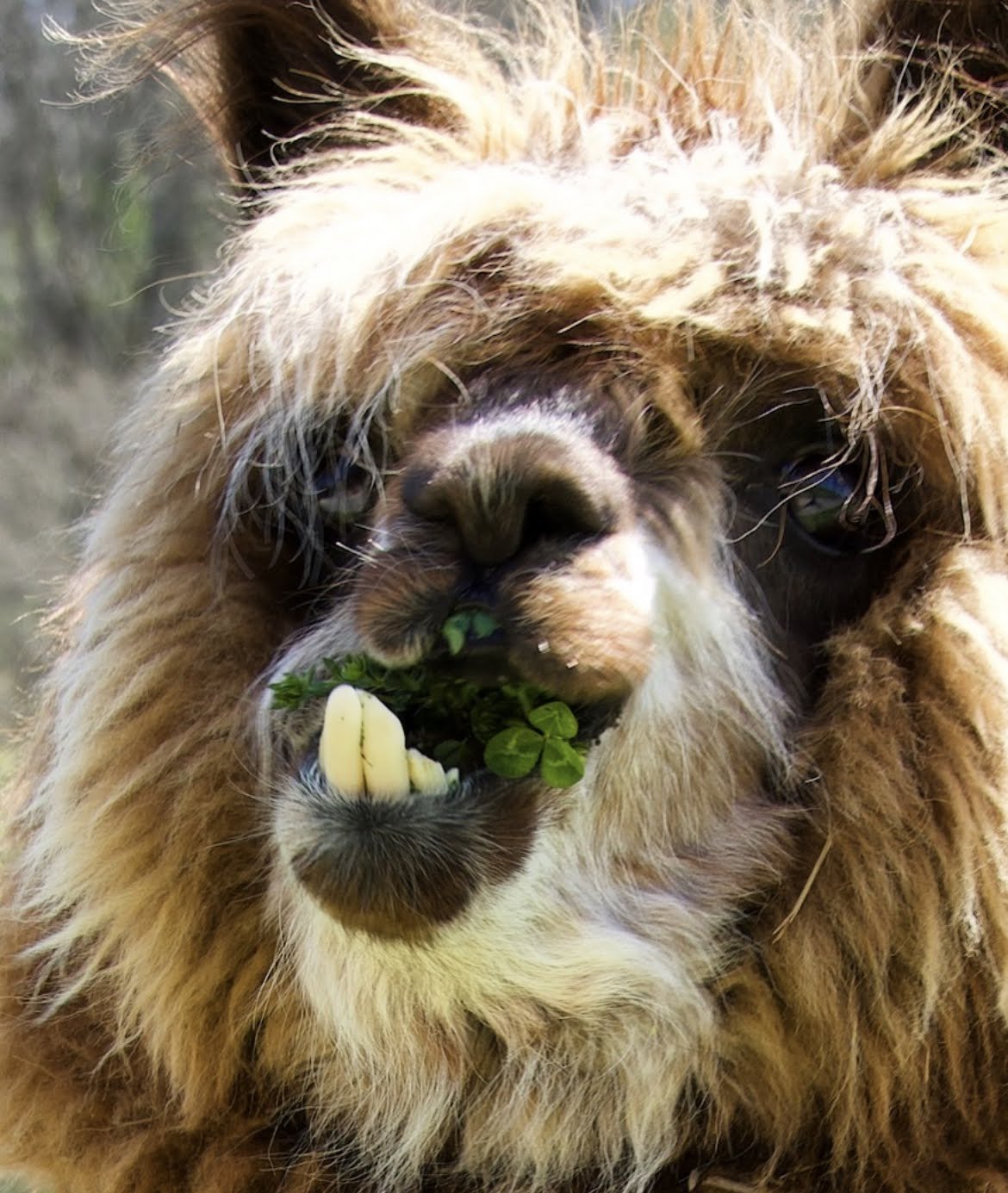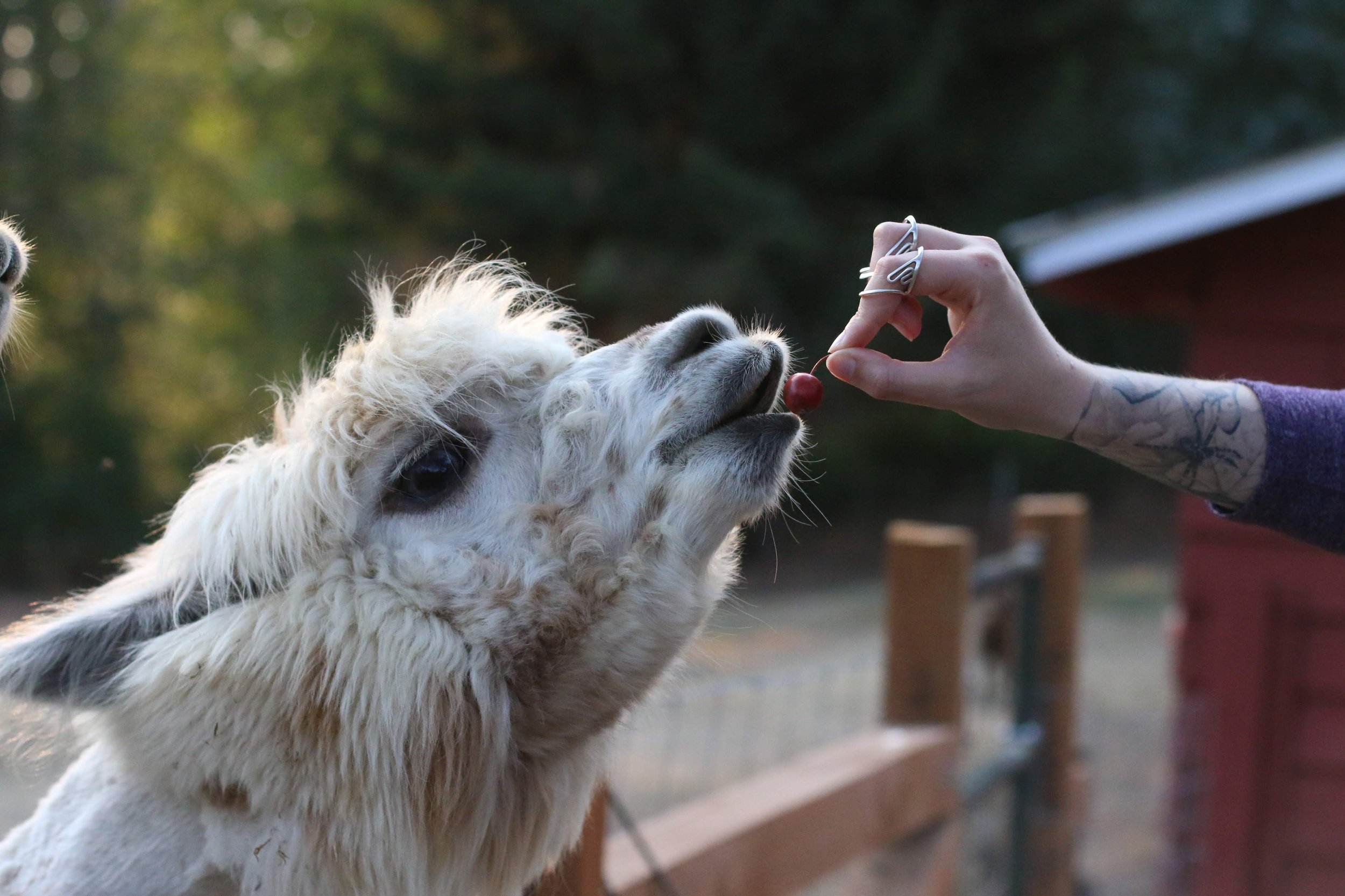15 Facts You Might Not Know About Alpacas
Are you considering getting alpacas as part of your farm family but don't know where to start? I got ya! In this article, I wanted to share 15 facts that will help you understand and appreciate these lovable animals even more.
1. Alpacas are Prey animals, not flock guardians:
Alpacas' role as prey animals in their natural habitat has honed their excellent eyesight. They can spot potential predators from a considerable distance, but because they themselves are prey animals, they don’t necessarily make great flock guardians, which seems to be a bit of a misnomer in the homesteading community. I myself got my first alpacas hoping to use them to protect my flock, and the only reason they did a halfway decent job was because the herd queen was half llama. Definitely something to consider.
2. Extended Gestation:
The gestation period in alpacas lasts approximately 11.5 months, or around 335 days. Throughout this period, the female carries and nourishes the developing cria (alpaca baby) inside her womb. Alpaca owners and breeders closely monitor the pregnant female's health and provide appropriate care to ensure a successful pregnancy and a healthy cria. Proper nutrition and regular veterinary check-ups are essential during this time. This long gestation resulted in a SHOCKING surprise on our homestead, when, almost a year after I’d brought our first pair of alpacas home, a baby appeared. Dolly Llama ended up being my friendliest alpaca by far, as well as my greatest camelid teacher.
3. Therapeutic Companions? Not by nature:
In recent times, alpacas have emerged as popular therapy animals due to their calming presence and gentle nature. It should be mentioned, however, that cultivating a bond with humans, like the one often seen in viral internet videos, often involves stripping the “alpacaness” from the alpaca- remember, they’re naturally prey animals, and generally don’t like being around humans or other animal species due to their unpredictable nature. Generally, these human-centered alpacas have been bottle fed since birth, and often, have bonded to humans as their “herd” rather than alpacas, as they would naturally do. Seeing alpacas being raised as single pets in urban environments really breaks my heart. Adult alpacas can absolutely be gentled over time, mine were totally feral when I got them, and I eventually won them over with treats, consistency, controlling the unpredictable nature of my movements… and, of course, a TON of time.
4. Gentle on Fences and Trees:
Unlike some of their more boisterous counterparts, alpacas display a gentle nature when it comes to fences and structures. They often prefer going under or through openings instead of jumping over them. However, if you're keen on perfectly trimmed trees, watch as they trim the foliage at the exact height their little fingerlips can't reach!
5. Herbivorous Marvels:
Alpacas are dedicated herbivores, primarily grazing on grass and hay in captivity, mountain forage in the wild. Their sophisticated three-compartment stomach allows them to efficiently extract essential nutrients from this plant-based diet. They’re used to foraging, however, so in captivity, it’s often necessary to supplement a diet of grass and hay with fortified pellets and specially formulated free choice minerals.
6. Communal Dung Piles:
Alpacas may seem carefree, but they are actually quite organized when it comes to their bathroom habits and social structure. They create communal dung piles, a clever evolutionary product to reduce the spread of parasites and diseases. The head alpaca tells the others when and where it's bathroom time, and the rest of the herd will follow.
7. Social Butterflies:
If you're planning to keep alpacas, be prepared to bring home more than one- I recommend at least three, especially at the start, because the learning curve for alpacas is steep, and if you get a bonded pair, you’ll have a bereft alpaca, with high liklihood of dying of a broken heart if something happens to the other. These incredibly social animals thrive on companionship and find comfort in living in herds. They communicate through a fascinating array of sounds, including gentle humming, grunting, and other nuanced body language.
8. Alpacas and Regenerative Agriculture:
For hilly farms engaged in regenerative agriculture, alpacas are the perfect eco-friendly addition. Their padded feet leave minimal impact on the ground, protecting delicate ecosystems. Alpacas' gentle grazing habits help control overgrowth, prevent soil erosion, and enhance pasture quality. They’ll also eat things your other animals won’t, which is always a plus for keeping things well mowed.
9. A Camelid Connection:
Alpacas belong to the camelid family, which includes their larger relatives like camels and llamas. Hailing from the landscapes of South America, particularly Peru, Bolivia, and Chile, alpacas have been domesticated for thousands of years, making them an integral part of the region's history and culture.
10. Fiber Magic:
One of the most intriguing aspects of alpacas is their remarkable fiber. Alpaca fleece acts as natural insulation, ensuring they stay warm during the cold and comfortably cool during hot weather. Beyond its functional benefits, alpaca fiber is hypoallergenic, lighter, warmer, and softer than sheep's wool, and naturally flame-resistant, making it a safe choice for various projects. Its versatility allows it to be spun into different yarn weights, perfect for various crafting projects. Whether you're knitting cozy sweaters, crafting elegant accessories, or creating durable and beautiful home decor items, alpaca fiber is the perfect crafting companion.
11. Castration Tooth???"
Alpacas only have teeth on the bottom of their mouths, and a pad on top that they mash food against to break it down. Male alpacas have a special tooth, however, called a castration tooth, whose sole purpose is castrating other alpacas to continue the genetic lineage of the strongest alpaca in the herd. My own male alpacas have a delightful nightly ritual of chasing each other around, trying to bite each other’s testicles and assert their dominance/secure their position as herd king. In seven years, however, none of them have been successful. Which leads one to wonder….
12. Alpacas Spit, but not at humans:
When threatened or feeling the need to assert dominance within their herd, alpacas resort to a unique defense mechanism – they spit! This behavior is rarely directed at humans, but… even so, it's best not to provoke them, especially if their little buddies are close by. There is literally no more foul-smelling fluid on this planet. It’s like a mix between vomit and wet chicken poop that’s been steaming in the sun.
13. Nature's Fertilizer:
For garden enthusiasts, alpaca manure is a treasure trove of natural fertilizer. Not only is it low in odor, but just like rabbit poop, it is “cold” not “hot” manure due to a very low concentration of urea, and it can be used directly in the garden without prior composting. Though composting can further enhance its benefits, alpaca manure is known as “black gold” within the gardening community.
14. Two Types of Alpacas:
Alpacas come in two charming types: The Huacaya alpacas have dense, crimped fleece that gives them their iconic fluffy appearance, while the Suri alpacas captivate with their silky, dreadlock-like fiber.
15. Treasured by Ancient Civilizations:
Alpacas' luxurious fiber didn't go unnoticed by ancient civilizations, particularly the Incas. Highly valued for their soft and warm fleece, alpacas were seen as symbols of wealth and prosperity, a tradition that continues in the present day.
As you consider the prospect of having alpacas as part of your farm family, consider this: I absolutely adore my alpacas. They are weird and wonderful, but also, add more stress than any other single species of animal on our homestead. They’re extremely disease and parasite prone, especially in warmer climates. Rigid worming, regular shearing, and close attention need to be paid to their diet and environment for them to truly thrive. If you do go for it, embrace their quirks, cherish their company, and enjoy their fiber!
This post was originally published on July 20, 2023
Other Posts You May Find Interesting:





